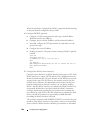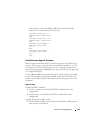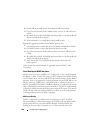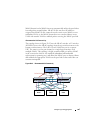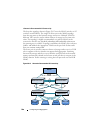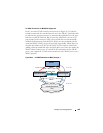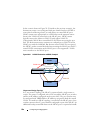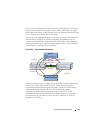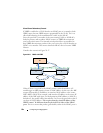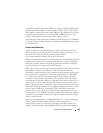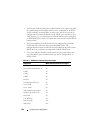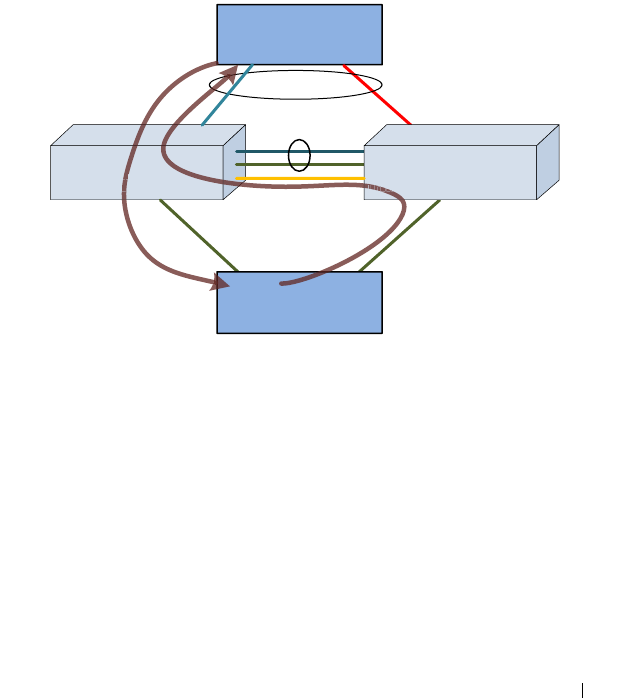
Configuring Link Aggregation 951
the case where a link from the router to one of the MLAG peers fails. Static
routes must be added to the primary and secondary MLAG peers to route
traffic addressed to the connected router across the backup routed link in the
case of a failure of an MLAG link to the router.
This is not a recommended topology, as the same scenario can be achieved
without the use of MLAG by simply configuring the middle switches as
routers and using ECMP to load-balance across the links to the redundant
router pair. In this type of solution, MLAG adds no value, as the redundancy
is provided by L3 routing, not by the MLAG.
Figure 28-16. Degenerate Routing Topology
In the one-armed scenario in Figure 28-16, the MLAG cannot associate the
failure of the VLAN 30 link with VLAN 20. Traffic from the routed or
switched network towards the upstream router is routed over the backup
router link when the MLAG link fails solely based on the routing
configuration. Traffic from the upstream router on VLAN 30 to the
switched/routed network is handled by the MLAG failover scenario and is
switched across the peer-link on VLAN 30, but it could just as easily be
handled by L3 routing.
Peer-Link
Router
MLAG
VLAN 30
VLAN 20
Router or Switch
VLAN 30
IP address 192.168.30.1/24
Failed Link
VLAN 10
IP address 192.168.10.1/24
IP route 192.168.30.1 192.168.20.1 200
VLAN 10
IP address 192.168.10.2/24
IP route 192.168.30.1 192.168.10.1 200
VLAN 20
1
6
8
I
P
r
o
u
t




